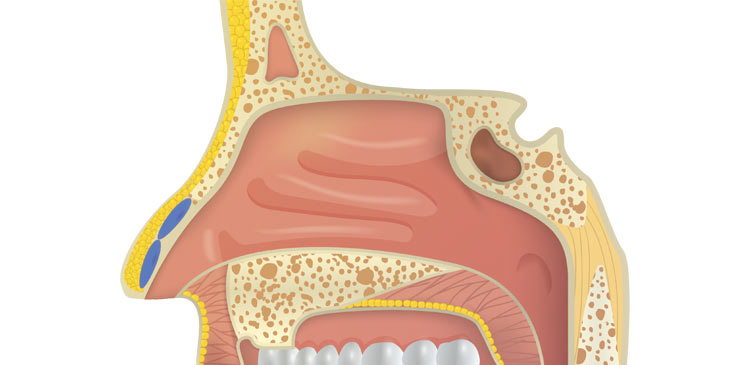The respiratory system is a network that contains several organs, such as diaphragm, lungs, trachea, and bronchus that are responsible to help you breathe in oxygen while letting out carbon dioxide. The role of the respiratory system is very vital for your overall well-being, as the lung expands and contracts to supply oxygen to support the functions of all major organs to eliminate carbon dioxide.

If you have any respiratory issues, then it is not possible for your vital organs to perform to their fullest, as the respiratory system has a main role in improving their efficiency. Most often, respiratory issues will be a symptom of a chronic health condition like psychosomatic conditions, heart disease or tuberculosis, as it is not limited to just an infection in your respiratory tract.
Interesting Facts About The Respiratory System
It is true that we all have experienced a respiratory disease or respiratory infection at some point of time or during several occasions. Even though you might be familiar about dealing with the various respiratory tract issues, you might not be fully aware about your respiratory system. We offer you some of best interesting facts about the respiratory system.
1. You Lose Water When You Exhale!
Most of you might have wondered why the window pane glass condenses when you are exhaling against it. The reason behind this condensation is because the air you exhale is rich in humidity. In short, you not only expel carbon dioxide by breathing out but also a high amount of water vapor.
While breathing normally, you lose up to 17.5 ml of water every hour while exhaling. And when you perform workouts, the water loss is 4 times higher! [Source]
2. You Can Hold Your Breath For 20 Minutes!
Have you tried to hold your breath for a few seconds? While some people can hold their breath only for 30 to 60 seconds at an average, some people can go way beyond this scale. Some individuals can hold their breath for 20 minutes. https://www.youtube.com/watch?v=L89kY5ewgqU
Professionals like free drivers who are involved in diving sports underwater, follow various techniques like hyperventilation to lower the carbon dioxide amount in blood to hold their breath for several minutes. Stig Severinsen, a free diver of Denmark has created a Guinness world record in 2010 by holding breath at a stretch for 22 minutes! Barcelona-based Segura has set the Guinness World Record by holding his breath for 24 minutes and 3 seconds. [Source]
3. One Lung Is Smaller Than The Other!
If you were of the idea that both your lungs are perfectly symmetrical, you will change your opinion after you read this fact. Your right lung is actually slightly bigger than the left lung. This natural arrangement of the smaller left lung is to offer enough room for your heart. Also, there are 3 lobes in your right lung while the left lung has just 2 lobes. [Source]
4. Nasal Hairs Are Not Useless!
Most often, people cringe when they spot someone with untrimmed nasal hair. But, the interesting fact is that these tiny hairs growing in your nasal cavity have an important role to play in your overall health. These tiny hairs known as cilia have the ability to trap all the dust and other minute particles in the air that you inhale. The nasal hair also warms up the inhaled air during winters and while walking through chilly regions.
5. Your Lungs Can Float In Water!
Yes, you read it right! Your lungs are only part of your body that has buoyancy. The lungs contain 300 million alveoli, which are sac structures similar to balloons and get filled up with air when you are inhaling. These tiny inflatable sacs offer the lungs their natural buoyancy while helping in expelling the carbon dioxide from your blood.

6. Sneezing Is Good!
You might feel intimidated while sneezing in a meeting, but, it is a semi involuntary action of your respiratory system to remove excess air from the lungs. Sneezing occurs when there is any irritation in your air passages caused by irritants like pet dander, fur, dust or smoke. The amazing fact about sneezing is that it exhales air at remarkable speed, which is equivalent to a miniature car driving at 165 km per hour.
7. Surface Area Of Alveoli Is Massive!
It is fascinating to know how alveoli work in order to supply oxygen to your body parts. Alveoli comprise of thin walls that feature tiny blood vessels known as capillaries. The blood of the capillaries absorbs oxygen from the air when the alveoli get filled with the air that is inhaled.
Capillaries also store carbon dioxide within alveoli, which activity is termed as gas exchange. When you separate each of such capillaries from the 300 million plus alveoli and connect it at the ends, it would measure the length of 1600 kms, which can nearly cover the area of a tennis court!
8. Breathing Rates Are Varied!
The rate of breathing is not the same among in men, women, and kids. Children and women will have quicker breathing rates when compared to men. Newborns also have very fast breathing rate than toddlers. At an average, most adults would exhale and inhale 12 to 25 times per minute, but the rate of breathing in newborns will be 4 times higher with 30 to 60 breaths for every minute.
9. Yawn Often. It’s Good For You!
Every time you yawn, the respiratory system is coping up with low oxygen supply. When the brain senses a shortage in the supply of oxygen in the body, it sends a signal to your respiratory system to make you yawn immediately, as it would take in a vast amount of air. [Source]
10. There Is No Connection Between The Chest Movement And Breathing!
It is true that you have been taught in schools that your chest swells when you breathe in and it collapses while you breathe out. However, these movements of your chest are not the result of air exiting or filling up the lungs. When inhaling, your diaphragm or the dome like muscle separating the abdominal cavities and the chest, will move and contract to make more space in the chest area. In the mean time, the rib muscles also contract for pulling the rib cage outward and upward and vice versa.
11. Lung Capacity Of Males And Females Are Different!
The lung capacity tends to slightly vary, as the amount of air held in the lungs of males and females is different. The males have a higher lung capacity that that of the females. The average holding capacity of humans is from 4 litres – 6 litres of air. [Source]
12. You Breathe 22,000 Times Per Day!
When you inhale, the oxygen carried by the blood runs through the arteries to reach the body cells and gets used up later. The cell then releases the carbon dioxide, which is then carried by the blood to the lungs and gets released while you exhale. So, totally, you take around 22,000 breaths per day while breathing in 8000 liters or 2000 gallons of air every day. [Source]
We hope you liked the interesting facts that we have compiled on the respiratory system for you. Pass on it to your kids and share it with your friends to help them realize how amazing their body part is.
